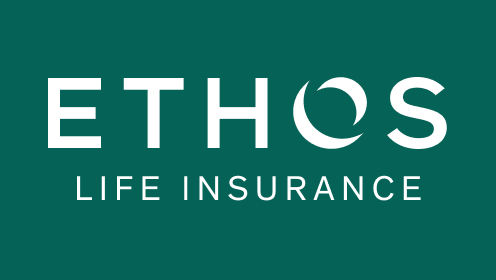Mama, don’t let your babies grow up to be fishermen, pilots or roofers — at least if you want them to find reasonably priced life insurance.
Some professionals, such as bomb disposal experts, should expect that their job is going to make it difficult to buy life insurance. (It’s just one of the hazards of having a job with a deadly weapon in its name.) But other workers may have no idea that their profession is deemed high-risk by insurance companies.
“The truth is consumers don’t think they are in high-risk professions,” says Mike Kilbourn, president of Kilbourn Associates in Naples, Florida. “A roofer doesn’t think he will pay more because he stands on a roof all day. And he might not find out until the application is submitted to the insurance company.”
How life insurance companies size you up
Life insurance rates are generally based on the policyholder’s life expectancy. Insurers will examine numerous variables to predict your lifespan, including your age, gender, nicotine use, alcohol use and health history – plus extra risk factors such as your occupation and hobbies.
Insurers often offer people in risky occupations “rated” policies – if they offer them policies at all. Compared to policies for people in “ordinary” careers, rated policies will cost policyholders extra money in premiums every month.
That doesn’t mean, however, that all insurers take the same view on dangerous professions.
“Not all companies rate a particular risky profession the same, and thus the premiums for the same coverage can vary significantly between companies,” Kilbourn says. “So, a person who applies for life insurance may be approved at a ‘standard’ rating by one insurance carrier, yet be rated as a ‘substandard’ by another – even with the very same information on their insurance application.”
This is good news for those who have been denied policies by one or more companies because of their risky job. It means they may still be able to find an affordable policy, provided they’re willing to shop for the best life insurance company for their needs.
Unsure whether you’re in a risky line of work? These occupations have the 10 highest fatal work injury rates, according to a 2014 report by the Bureau of Labor Statistics. If you’re employed in one of them, don’t be surprised if your insurance agent raises an eyebrow when you submit your application.
1. Logger
Falling trees, gusting winds, buzzing chainsaws, unpredictable terrain and dangerous wildlife are just some of the factors that make logging a calamitous profession. Its fatality rate is 91.3 deaths per 100,000 workers. (For reference, the national average fatality rate for U.S workers is 3.2 deaths per 100,000 workers.)
2. Commercial fisher
Harsh weather, heavy equipment, unrelenting sun exposure and sleep deprivation are among the risks taken by commercial fishers. Their fatality rate stands at 75 deaths per 100,000 workers.
3. Aircraft pilot/flight engineer
High stress and long hours take their toll on commercial airline pilots, search and rescue pilots, and flight engineers. Test pilots court risk while pushing equipment to the brink, while crop dusters are exposed to a host of chemicals as they fly low near power lines and other hazards. The death rate of pilots and flight engineers is 50.6 deaths per 100,000 workers.
4. Roofer
Some roofers might be surprised to learn that their profession’s fatality rate of 38.7 deaths per 100,000 workers gives it the fourth-highest rate of fatal injuries. But it’s hard to get around the inherent dangers that come with working on an elevated surface virtually every day.
5. Farmer
Farmer and ranchers face many of the same hazards as loggers, but with an extra peril: tractors. The leading cause of death for farmers and ranchers involved overturned tractors, according to the CDC. The rate of death among farmers is 21.8 per 100,000 workers.
6. Miner
There are so many mining disasters that the Mine Safety and Health Administration breaks down the tragedies by specific variables. But rampant news coverage of mining disasters may be increasing safety awareness in this industry. Although fatality rates naturally vary by year, after the CDC reported 70 fatalities in 2010, that number dipped to 35 in 2012 and the BLS report, which looked at data from 2013, found a fatality rate of 26.9 per 100,000 workers for mining machine operators.
7. Refuse and recyclable collector
You may tip your garbage collector every Christmas, but it’s possible he deserves more for the risks he takes. Working with heavy, potentially hazardous equipment, jumping on and off moving vehicles and exposure to chemicals brings this job’s fatality rate to 33 deaths per 100,000 workers.
8. Truck driver (and others who drive for work)
The sprains, strains and exhaustion of truckers are just part of this story. The Occupational Safety & Health Administration reports that more of these workers are killed or injured on the job than any other occupation in the U.S., due in part to the heavy equipment, chemicals and on-the-road perils involved in this work. The occupation ranks seventh on the BLS list – at 22 fatalities for every 100,000 workers – with truckers and those that drive as part of sales jobs combined.
9. Electric power line installer/repairer
Working with high voltage while high in the air is dangerous enough on clear, sunny days. But many of these workers install and repair the lines at night and in nasty weather, bringing this occupation’s fatality rate to 21.5 deaths per 100,000 workers.
10. Construction laborer
Collapsing scaffolds, falls and electrical shocks are some of the fatal hazards cited by OSHA that bring the death rate of construction workers to 17.7 deaths per 100,000 workers. The BLS found that half of all contract workers who were fatally injured in 2013 were working in construction.
How to get life insurance with a dangerous job
Workers in dangerous professions are often still able to get life insurance, though they may not like the cost of it.
But as with people in nonrisky professions, the best way for high-risk workers to find the most affordable life insurance quotes is to be diligent and shop several different companies.
Steven Schwartz, vice president and practice leader of the Executive Benefits division at HUB International in Northeast, New York, notes a particular client who was quoted a $5,100 annual premium by one company before turning to Schwartz, who secured him a $1,700 annual premium from a different company. That’s a savings of $3,400 a year (or nearly $70,000 over the life of a 20-year term life policy).
Krystalynn M. Schlegel of M.G. Schlegel & Associates, Inc., an estate and business planning brokerage in Novato, California, agrees that matching a client with their ideal insurance company is crucial.
“Oftentimes, if I have a client with a high-risk profession I will write a cover letter to the insurer explaining the specifics, supplying credit reports, driving records and personal details such as if they go to church, if they have kids,” she says. “That helps (the underwriters) understand them better.
And don’t forget: If you’re in a high-risk job when you obtain your life insurance policy, but change to a safer profession later on, you can petition your insurance company to reconsider your premium.










